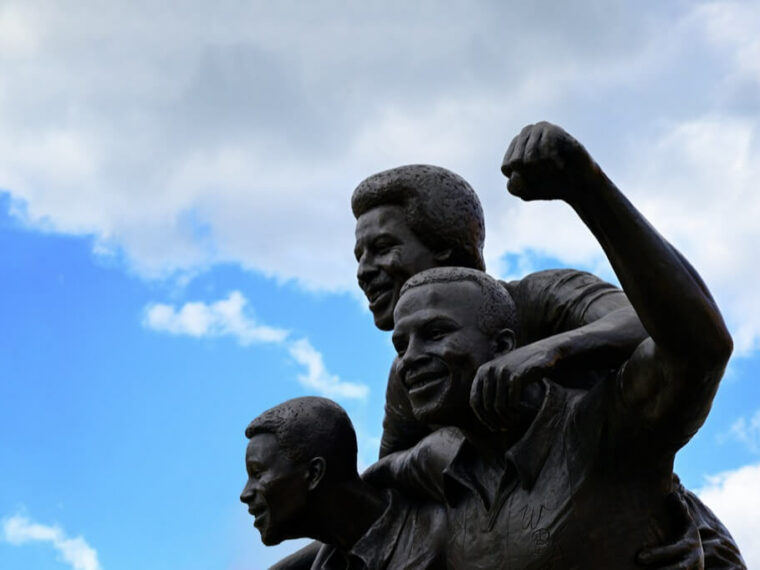The concept of the U.S. President taking sick days is a complex issue, primarily due to the constant nature of their responsibilities. Even during vacations, the President is obliged to fulfill critical duties, including intelligence and national security briefings. This round-the-clock obligation implies that the President, despite the position’s demanding nature, doesn’t have official ‘sick days’ in the traditional sense.
When a President falls seriously ill, the 25th Amendment of the U.S. Constitution becomes relevant. This Amendment allows for the Vice President to step in as the “Acting President” if the President is unable to perform their duties. This mechanism ensures the continuity of governance, even when the President is incapacitated. It’s a kind of institutional ‘sick leave,’ but one that transfers presidential powers temporarily rather than the President merely stepping away from duties.
The 25th Amendment provides two ways for power transfer. The President can voluntarily transfer power to the Vice President if they feel unable to perform their duties. Interestingly, there’s also a provision for involuntary transfer: if the President is unable or unwilling to relinquish power during incapacity, the Vice President and a majority of the Cabinet can declare the President unfit, temporarily transferring presidential powers.
Despite its significance, the use of the 25th Amendment has been rare. Ronald Reagan was the first to invoke it during his surgery in 1985, transferring power to George Bush for a brief period. George W. Bush also used this provision twice for colonoscopies, each time making Dick Cheney the acting president for a few hours. These instances highlight the Amendment’s practical use in maintaining government stability.
U.S. Presidents have historically been reluctant to take time off for health issues, often keeping their ailments private. A notable case was Woodrow Wilson, who suffered a massive stroke in 1919, significantly impairing his abilities. The severity of his condition was largely kept from the public, demonstrating the lengths to which presidential health can be shielded from public scrutiny.
The 25th Amendment, ratified in 1967, specifically addresses instances where a President cannot perform their duties due to illness or other incapacities. This Amendment to the United States Constitution clarifies the procedures for both temporary and permanent transitions of presidential power, ensuring continuous governance even when the President is incapacitated.
Sections of the 25th Amendment Explained
The Amendment comprises four sections, each dealing with different scenarios of presidential or vice-presidential incapacity or vacancy:
Section 1: Presidential Succession
This section explicitly states that if the President dies, resigns, or is removed from office, the Vice President becomes the President, thereby filling the highest office in the land, not just assuming the duties.
Section 2: Vice Presidential Vacancy
In case the Vice Presidency becomes vacant, the President nominates a successor who assumes office after majority confirmation by both Houses of Congress. This ensures no prolonged vacancy in the nation’s second-highest office.
Section 3: Voluntary Temporary Transfer of Power
This section allows a President to voluntarily transfer their powers to the Vice President by notifying the President pro tempore of the Senate and the Speaker of the House of their inability to perform duties. The Vice President becomes the Acting President until the President declares they are capable of resuming their duties.
Section 4: Involuntary Transfer of Power
Perhaps the most complex, this section outlines a process where the Vice President and a majority of the principal officers of the executive departments can declare the President unfit. The Vice President then assumes the role of Acting President. If the President disputes this, Congress decides the issue with a two-thirds vote in both Houses required to keep the Vice President as Acting President.
The practical application of the 25th Amendment ensures the President of the United States, even in times of personal health crises, can ensure the smooth functioning of the executive branch. It provides a clear, constitutional path for the temporary transfer of presidential power, ensuring national stability and continuity of government operations. This mechanism is crucial, considering the demanding and uninterrupted nature of presidential responsibilities.
Understanding Presidential Incapacity in Modern Times
In today’s fast-paced and ever-evolving political landscape, understanding the implications of presidential incapacity is more crucial than ever. For you, as an informed citizen, it’s vital to recognize how such situations could impact the nation’s governance and stability. Advances in technology and global interconnectedness mean that quick decision-making is often needed, making the uninterrupted functioning of the presidential office essential. The 25th Amendment provides a safety net, ensuring that, even if the President is incapacitated, there is a clear, constitutional pathway for maintaining the continuity of executive leadership.
As medical advancements continue, the likelihood of Presidents serving through serious health issues increases. The 25th Amendment could play a more prominent role in future administrations, offering a structured approach to handling these challenges. This means that should a President become seriously ill, the mechanisms are in place to temporarily transfer power, ensuring that government operations continue smoothly. This process not only upholds the integrity of the presidency but also ensures that national and international obligations are met without interruption.
Looking ahead, transparency regarding the health of a President will be increasingly important in maintaining public trust. The use of the 25th Amendment, whether for minor or major health issues, requires careful communication to the public to avoid unnecessary panic or speculation. As you engage with news and political discourse, an understanding of this process can help you navigate the information and understand the implications of such decisions on national and global scales.
Evolving Presidential Health Protocols
In the future, we may see more defined protocols around the health and wellness of Presidents, given the high demands of the office. This might include regular health check-ups, more rigorous physical requirements, and perhaps even public disclosures of health records. These evolving protocols will aim to preemptively address potential health issues, ensuring that a President is always fit to serve and reducing the need for invoking the 25th Amendment.
Finally, as we move further into the digital age, the way presidential incapacity is handled may evolve. With the increasing role of digital communication and virtual presence, a President might be able to fulfill certain duties even while physically incapacitated. The 25th Amendment offers the flexibility to adapt to these changes, ensuring that the presidential office remains robust and capable of meeting the challenges of the 21st century.
The concept of uninterrupted leadership in the Oval Office underscores a fundamental aspect of national governance – resilience. The mechanisms in place to handle the President’s inability to perform duties due to health concerns are a testament to the robustness of the country’s political system. These protocols ensure that the high responsibilities of the presidency are always met, regardless of personal health challenges. This approach not only maintains the integrity of the office but also reassures the public and international community of the continuous and effective operation of the U.S. government.





